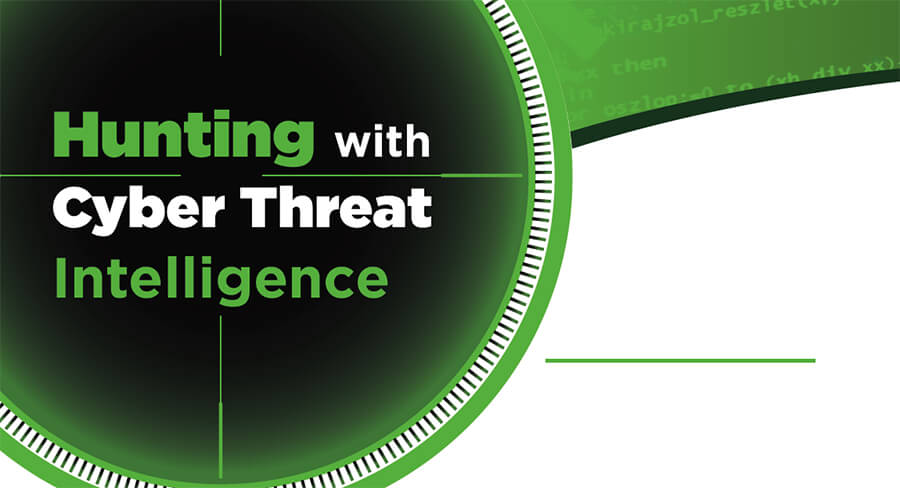
Threat Hunting Methodology


-
Cyber Security Foundational Knowledge: Cyber Threat Hunting Methodology
Date: 23 June 2023
I. Introduction
A. Definition of cyber threat hunting
Cyber threat hunting is an active practice employed by security analysts to proactively search and investigate systems and networks for potential malicious activities and ongoing attacks that may have evaded traditional detection mechanisms. It involves leveraging cyber threat intelligence and indicators of compromise (IoCs) to detect and respond to emerging threats. By actively hunting for signs of compromise and unauthorized activities, organizations can enhance their ability to identify and mitigate cyber threats before they cause significant harm or damage.
B. Importance of cyber threat hunting methodology
Cyber threat hunting methodology plays a crucial role in bolstering organizations' cybersecurity defenses. It involves a proactive and targeted approach to uncovering potential threats and identifying malicious activities that may have evaded traditional security measures. By actively searching for indicators of compromise (IoCs) and signs of ongoing attacks, threat hunting aims to detect and mitigate threats before they can cause significant damage or compromise sensitive data.
With cyber threat hunting, organizations gain the ability to stay one step ahead of the ever-evolving threat landscape. It allows security teams to uncover unknown or emerging threats that may not have been previously identified, enabling them to develop appropriate defense strategies. By continuously monitoring systems and networks, security analysts can enhance their situational awareness and gain real-time insights into potential risks. This enables them to make informed decisions, prioritize response efforts, and allocate resources effectively.
Cyber threat hunting methodology complements incident response efforts. It provides valuable insights into attack vectors, tactics, and procedures employed by threat actors. By understanding the extent of the compromise and the attacker's activities, organizations can improve their incident response capabilities and expedite the containment and remediation of security incidents.
Cyber threat hunting methodology offers a proactive and targeted approach to cybersecurity, enabling organizations to detect and respond to advanced threats, uncover unknown risks, improve incident response capabilities, and enhance their overall situational awareness. By adopting this methodology, organizations can strengthen their security defenses and better protect their critical assets from cyber threats.
II. Overview of Cyber Threat Hunting Methodology
A. Definition of methodology in the context of cyber threat hunting
Methodology, in the context of cyber threat hunting, refers to a structured and systematic approach used to proactively search for and identify potential threats and malicious activities within an organization's systems and networks. It involves a combination of techniques, tools, and processes designed to uncover indicators of compromise (IoCs) and detect any ongoing or undetected attacks.
Cyber threat hunting methodology typically includes several key steps. It begins with defining the scope and objectives of the hunt, determining what specific threats or indicators to look for. Next, relevant data sources and logs are collected and analyzed, including network traffic, system logs, and security event data. Analysts leverage various threat intelligence sources, such as known attack patterns and IoCs, to guide their investigations.
Once the data is collected, it is carefully analyzed, often using advanced analytics techniques and tools, to identify any anomalous or suspicious behavior that may indicate a potential threat. Analysts follow leads, trace attack paths, and conduct in-depth investigations to gain a deeper understanding of the attack vectors, tactics, and techniques employed by threat actors.
The methodology also emphasizes the importance of continuous monitoring and refinement. It involves iterative cycles of data collection, analysis, investigation, and response, enabling organizations to adapt and update their defense strategies based on new information and emerging threats.
In summary, cyber threat hunting methodology encompasses a structured and proactive approach to identifying and mitigating potential threats. It combines data analysis, threat intelligence, investigation techniques, and continuous monitoring to detect and respond to malicious activities that may have eluded traditional security measures. By adopting a systematic methodology, organizations can enhance their ability to detect and respond to advanced threats, strengthen their security posture, and minimize the impact of cyber attacks.
B. Key components of a robust cyber threat hunting methodology
1. Proactive approach - Threat Hunting Vs Incident Response
Threat hunting and incident response serve distinct yet complementary roles in the realm of cybersecurity. Threat hunting involves proactive measures taken by security analysts to actively search through systems and networks for potential ongoing attacks that may have eluded traditional detection methods. It utilizes cyber threat intelligence and indicators of compromise to detect malicious activity and prevent further harm. In contrast, incident response is a reactive process that focuses on responding to known incidents and swiftly mitigating threats. It involves investigating and recovering systems to their pre-incident state. While incident response addresses identified incidents, threat hunting aims to identify threats that may have gone undetected. By employing both approaches, organizations can enhance their overall security posture, anticipate potential risks, and minimize the impact of cyberattacks.
2. Continuous monitoring
3. Data collection and analysis
4. Hypothesis generation and testing
5. Incident response and mitigation
III. Tools and Technologies for Cyber Threat Hunting
A. Network analysis tools
1. Intrusion detection systems (IDS)
2. Network traffic analysis tools
B. Endpoint analysis tools
1. Endpoint detection and response (EDR) solutions
2. Host-based intrusion detection systems (HIDS)
C. Threat intelligence platforms
1. Open-source threat intelligence feeds
2. Commercial threat intelligence feeds
D. Security information and event management (SIEM) systems
1. Log management and analysis
2. Event correlation and alerting
IV. Search Engines and Data Sources for Cyber Threat Hunting
A. Open-source intelligence (OSINT) tools
1. Shodan
Shodan serves as a valuable resource for cyber threat hunting by offering a unique perspective into the exposed and vulnerable devices on the internet. Threat hunters leverage Shodan's search capabilities to identify specific devices, services, or vulnerabilities that could pose a risk to their organization. By querying Shodan's extensive database, threat hunters gain insights into open ports, banners, and other metadata associated with internet-connected devices. This information aids in identifying potential targets for further investigation or vulnerability assessment. Additionally, Shodan provides a platform for monitoring and tracking changes in device configurations, which can be useful in identifying new vulnerabilities or detecting potential security breaches. Through Shodan, threat hunters can proactively identify and mitigate security risks by staying ahead of emerging threats and taking appropriate actions to protect their systems and networks.
2. Censys
Censys is a valuable tool for cyber threat hunters, offering comprehensive visibility into the internet's infrastructure. Its scanning capabilities enable hunters to discover and analyze internet-connected devices, services, and protocols. By querying Censys's dataset, hunters can identify hosts, open ports, SSL certificates, and other relevant information, aiding in the detection of vulnerabilities or misconfigurations. This information helps prioritize investigations and implement proactive security measures.
Censys also provides real-time monitoring and alerting features, enabling hunters to track changes in device configurations, identify potential security incidents, and detect indicators of compromise (IoCs). With customized searches and filters, hunters can stay updated on emerging threats and respond promptly to mitigate risks.
Censys empowers cyber threat hunters by providing a comprehensive view of the internet landscape. It aids in the proactive identification of vulnerabilities, tracking configuration changes, and detecting potential security incidents. Through these capabilities, organizations can enhance their security posture and minimize the impact of cyber threats.
B. Dark web monitoring tools
1. Tor browser
Using TOR for cyber threat hunting involves leveraging its capabilities to enhance anonymity and protect sensitive investigative activities. TOR, which stands for The Onion Router, is a network of volunteer-operated servers that allows users to browse the internet anonymously and access websites with increased privacy. Here's a summary of how TOR can be used for cyber threat hunting:
Anonymity and Privacy: TOR routes internet traffic through a series of relays, encrypting it at each step. This helps conceal the user's identity and location, making it difficult for adversaries to track their activities. Threat hunters can leverage TOR to conduct research and investigations without leaving easily traceable footprints.
Access to Hidden Services: TOR provides access to hidden services or websites that are not indexed by regular search engines. These hidden services can host forums, marketplaces, and other platforms where threat actors may communicate or share malicious tools. Threat hunters can use TOR to explore these hidden services, gather intelligence, and gain insights into the underground activities.
Source IP Diversity: TOR routes traffic through multiple relays, effectively changing the source IP address at each hop. This helps in diversifying the origin of network traffic, making it harder for adversaries to identify the true source. Threat hunters can leverage TOR to simulate traffic from different locations and blend in with the anonymity provided by the TOR network.
Avoiding Network Surveillance: TOR's encryption and relay-based routing can help protect against network surveillance and monitoring. By using TOR, threat hunters can minimize the risk of their investigative activities being intercepted or monitored by potential adversaries.
Collaboration and Communication: TOR includes features like TOR Messenger and OnionShare, which allow for secure and private communication and file sharing. Threat hunters can utilize these tools to exchange sensitive information, share findings securely, and collaborate with other researchers while maintaining confidentiality.
It's important to note that while TOR provides increased privacy and anonymity, it is not foolproof and has its limitations. Threat hunters should still exercise caution, follow best practices for operational security, and employ additional security measures to ensure the integrity of their investigations.
2. DarkOwl
DarkOwl facilitates cyber threat hunting in the darknet through continuous monitoring, threat actor attribution, and analysis of darknet data. Threat hunters actively monitor the darknet, collecting data on emerging threats and malicious activities. This proactive approach enables early detection and timely action to strengthen security. Additionally, by examining digital footprints, threat hunters can attribute specific malicious activities to individuals or groups, enhancing investigations and understanding of threat actors' tactics. DarkOwl also provides comprehensive intelligence reports that keep threat hunters informed about evolving threats and darknet trends, enabling informed decision-making for effective cybersecurity defenses.
C. Threat intelligence platforms and feeds
1. VirusTotal
2. Recorded Future
V. Methods and Techniques for Cyber Threat Hunting
A. Signature-based detection
B. Behavior-based detection
C. Anomaly detection
D. Indicators of compromise (IOC) hunting
E. Pattern recognition and correlation
VI. Real-World Examples of Cyber Threat Hunting
A. Stuxnet: Targeting industrial control systems
B. WannaCry: A global ransomware attack
C. APT29 (Cozy Bear): State-sponsored threat actor
D. Carbanak: Targeting financial institutions
VII. Challenges and Future Directions in Cyber Threat Hunting Methodology
A. Data volume and complexity
B. Skill gap and expertise
C. Adversarial techniques and evasion tactics
D. Incorporating machine learning and AI
VIII. Conclusion
A. Recap
B. Importance of a comprehensive cyber threat hunting methodology
C. Future prospects and recommendations for further research